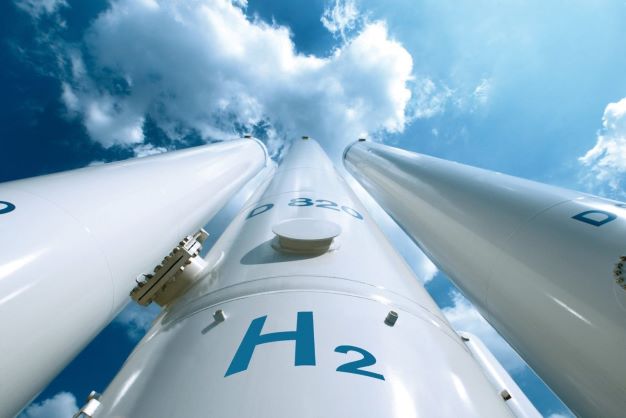Oman’s Liquid Hydrogen Export Project Gains Traction with Feasibility Progress
Oman is making significant strides toward establishing itself as a global leader in the green hydrogen market. The country’s ambitious liquid hydrogen export project has recently achieved a crucial milestone with the successful completion of its feasibility study. This progress is a game changer, as it brings Oman one step closer to becoming a major exporter of clean energy.
The liquid hydrogen project is part of Oman’s broader efforts to diversify its energy portfolio and reduce its dependence on fossil fuels. With a vast supply of renewable energy resources, such as solar and wind power, Oman is well-positioned to capitalize on the growing demand for clean energy. The feasibility study’s completion signals that the country is now ready to take the next steps toward commercializing its hydrogen production and export capabilities.
Feasibility Study: A Key Turning Point
The completion of the feasibility study marks a turning point for the project, as it confirms the technical, economic, and environmental viability of exporting liquid hydrogen from Oman. Conducted by a team of experts from the public and private sectors, the study explored key factors such as production costs, infrastructure requirements, and global market demand for hydrogen.
According to the study, Oman has significant potential to produce green hydrogen at competitive costs due to its abundance of renewable energy sources. This makes the country an attractive destination for investors looking to tap into the clean energy revolution. The feasibility report also highlights that Oman can leverage its existing port infrastructure to export liquid hydrogen to global markets, making it a strong contender in the hydrogen export sector.
Hydrogen as a Clean Energy Solution
Hydrogen is increasingly being recognized as a crucial element in the global transition to clean energy. As countries strive to meet their carbon reduction targets and reduce dependence on fossil fuels, hydrogen has emerged as a promising solution. It can be used in a variety of applications, from powering vehicles and industries to generating electricity.
Green hydrogen, in particular, is seen as one of the most sustainable forms of hydrogen. It is produced through electrolysis using renewable energy sources, such as wind or solar power, making it carbon-free. Oman’s ability to produce green hydrogen in large quantities is an attractive feature for global markets seeking to decarbonize their energy systems.

The demand for hydrogen, especially green hydrogen, is expected to grow rapidly in the coming years. Europe, Japan, and South Korea are among the leading markets for hydrogen, with many countries announcing ambitious hydrogen plans as part of their decarbonization efforts. Oman’s project is strategically positioned to meet this rising demand, as it offers a reliable and sustainable supply of green hydrogen at competitive prices.
Oman’s Renewable Energy Advantage
Oman’s renewable energy potential is a key factor in the success of the liquid hydrogen export project. The country benefits from abundant solar and wind resources, making it ideal for large-scale clean energy production. Oman’s Ministry of Energy and Minerals has been actively promoting renewable energy development and has set ambitious targets to generate a significant portion of the country’s electricity from renewable sources.
The Sultanate’s focus on renewable energy is also reflected in its Vision 2040, which aims to transform the country into a sustainable and diversified economy. By investing in hydrogen production and clean energy projects, Oman hopes to position itself as a global player in the green energy market while supporting its long-term economic growth and job creation.
In addition to its renewable resources, Oman has favorable geographic and logistical advantages. Its strategic location on the Arabian Peninsula provides easy access to key international markets, including Europe and Asia. This makes Oman an attractive hub for hydrogen production and export, further strengthening its position in the global clean energy supply chain.
The Role of Private and Public Partnerships
The successful progress of Oman’s liquid hydrogen export project is a result of strong collaboration between the government, private companies, and international partners. Public-private partnerships (PPPs) have been essential in driving the feasibility study and moving the project forward.
The government of Oman has shown strong support for the hydrogen initiative, with various ministries working together to create a favorable environment for investment. The country has also been in discussions with global energy companies, investors, and technology providers to explore potential partnerships and investments in the hydrogen sector.
In addition, international stakeholders have expressed interest in collaborating with Oman on this promising project. Experts from around the world are advising on best practices for hydrogen production, transportation, and export, helping to ensure the project’s success in the long term.
Looking Ahead: Next Steps for the Project
With the feasibility study successfully completed, Oman is now focusing on the next phase of the project: securing investment and building the necessary infrastructure for hydrogen production and export. This will involve establishing production facilities, including large-scale electrolyzers for hydrogen production, storage facilities, and specialized transport infrastructure to handle the liquid hydrogen.
One of the major challenges facing Oman will be scaling up production to meet the growing global demand for green hydrogen. To address this, the government is exploring ways to attract private investment and incentivize the development of hydrogen production capacity. The feasibility study also highlighted the importance of building strong international partnerships to ensure the smooth flow of hydrogen exports.
Oman’s liquid hydrogen export project is still in its early stages, but the successful completion of the feasibility study has provided a clear roadmap for the future. The next few years will be crucial as Oman moves forward with its plans to build a world-class hydrogen industry and establish itself as a leader in the global clean energy transition.
Oman’s Vision for a Sustainable Future
The liquid hydrogen export project is just one part of Oman’s broader vision for a sustainable future. The country is committed to reducing its carbon footprint and increasing its reliance on renewable energy sources. Through initiatives like this hydrogen project, Oman is not only diversifying its energy sector but also contributing to the global effort to combat climate change.
As global demand for hydrogen continues to rise, Oman’s position as a producer and exporter of green hydrogen will become increasingly important. By capitalizing on its renewable energy resources and strategic location, Oman is well on its way to becoming a key player in the global hydrogen market, helping to shape a more sustainable and cleaner energy future for generations to come.
Do follow gulf magazine on Instagram
for more information click here


